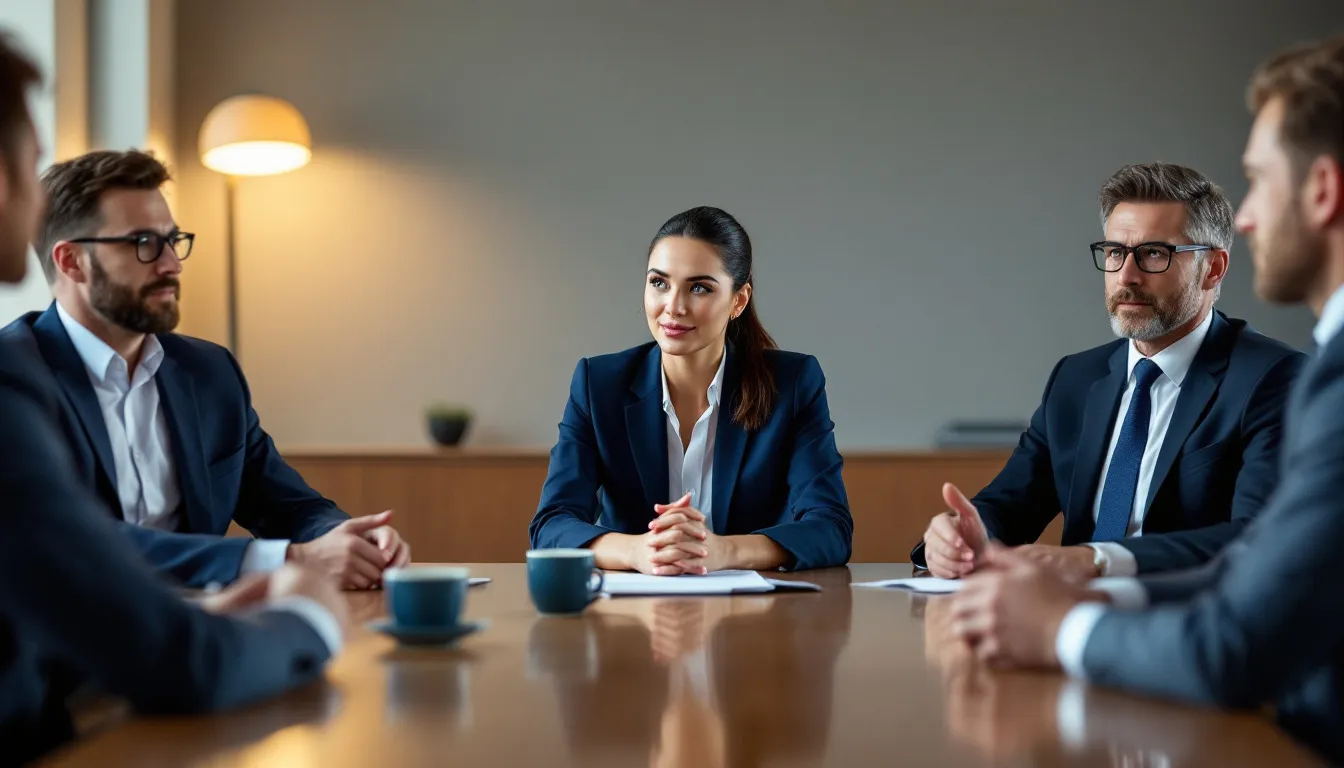Franchise disclosure documents (FDDs) play a crucial role in the franchising industry. These documents are designed to provide potential franchisees with all the information they need to make an informed decision about investing in a franchise. In this comprehensive guide, we will explore the various aspects of creating an effective FDD.
Understanding the Importance of a Franchise Disclosure Document (FDD)
A franchise disclosure document (FDD) is a legally required document that franchisors must provide to potential franchisees. Its purpose is to offer comprehensive information and disclosures about the franchisor, the franchise system, and the agreements involved. By providing transparency and clarity, the FDD helps potential franchisees evaluate the risks and benefits associated with investing in a particular franchise opportunity.
The FDD serves as a valuable resource for potential franchisees, enabling them to assess the viability and profitability of the franchise system. It also helps to establish trust between the franchisor and the potential franchisee, as it demonstrates the franchisor’s commitment to open communication and a level playing field.
Additionally, the FDD acts as a legal protection for both parties involved. It ensures compliance with franchise laws and regulations and helps to mitigate potential disputes or misunderstandings that may arise during the franchise relationship.
Furthermore, the FDD provides potential franchisees with important financial information that can help them make informed investment decisions. This includes details about the initial investment costs, ongoing fees, and potential revenue streams. By having access to this financial information, potential franchisees can assess the profitability and return on investment of the franchise opportunity.
Key Components of a Franchise Disclosure Document (FDD)
The FDD consists of several key components that provide a comprehensive overview of the franchise opportunity. These components include:
1. Cover Page: The cover page identifies the franchisor and provides basic contact information.
2. Table of Contents: The table of contents serves as a roadmap, outlining the structure and organization of the FDD.
3. Franchisor Information: This section provides background information about the franchisor, including their history, experience, and business operations.
4. Franchise Fees and Payments: In this section, the FDD details the initial franchise fees, ongoing royalties, advertising fees, and other financial obligations that the franchisee will be responsible for.
5. Territory and Site Selection: Here, the FDD outlines any restrictions or exclusivity clauses regarding the franchisee’s territory. It also covers the site selection process, lease agreements, and any requirements for the physical location.
6. Training and Support: This section explains the training programs, ongoing support, and resources provided by the franchisor to help franchisees run their businesses effectively.
7. Franchisee Obligations: The FDD outlines the responsibilities and obligations of the franchisee, including operational requirements, quality standards, and record-keeping procedures.
8. Intellectual Property: Here, the document covers any trademarks, patents, or copyrights associated with the franchise, as well as the terms and conditions for their use.
9. Financial Performance Representations: This section, also known as the Item 19, provides information about the financial performance of existing franchise units. It is optional but highly recommended.
10. Contracts and Agreements: The FDD includes copies of the franchise agreement, any ancillary agreements, and all the legally binding documents that govern the franchise relationship.
11. Other Disclosures: The FDD may include additional disclosures required by state or local laws, as well as any material changes or updates to the document.
12. Acknowledgment of Receipt: The FDD typically ends with an acknowledgment page for the potential franchisee to sign, confirming that they have received and reviewed the document.
Each of these components plays a crucial role in providing potential franchisees with a comprehensive understanding of the franchise opportunity.
13. Litigation History: This section provides information about any past or ongoing litigation involving the franchisor, including lawsuits, disputes, or regulatory actions. It helps potential franchisees assess the legal risks associated with the franchise opportunity.
The inclusion of the Litigation History component in the Franchise Disclosure Document (FDD) allows potential franchisees to make informed decisions about the franchise opportunity. By providing information about any past or ongoing litigation involving the franchisor, this section helps potential franchisees assess the legal risks associated with the franchise. It allows them to evaluate the franchisor’s track record in handling legal matters and understand any potential impact on their own business. This transparency promotes trust and transparency between the franchisor and potential franchisees, ensuring a more informed and mutually beneficial relationship.
Step-by-Step Guide to Drafting a Franchise Disclosure Document (FDD)
The process of creating an FDD can be complex and time-consuming. To help you navigate through it, we have prepared a step-by-step guide:
1. Research the Laws and Regulations: Start by familiarizing yourself with the franchise laws and regulations applicable in your jurisdiction. This will give you a solid foundation for creating a compliant FDD.
2. Hire Legal Professionals: Engage the services of experienced franchise attorneys who specialize in FDD drafting. They will guide you through the process, ensure compliance, and assist with preparing the necessary legal documents.
3. Gather the Required Information: Collaborate with key stakeholders within your organization to gather all the relevant information needed for the FDD. This includes financial statements, franchise agreements, and any other documentation that will be referenced in the FDD.
4. Organization and Formatting: Organize the information in a logical and easily navigable manner. Use headings and subheadings to break down the content and enhance readability. Ensure that your formatting complies with legal requirements and best practices.
5. Draft the Content: Begin drafting each section of the FDD using clear and concise language. Avoid excessive legal jargon and aim for a balance between comprehensive information and readability.
6. Review and Revise: Take the time to review and revise the FDD multiple times to ensure accuracy, consistency, and compliance. Solicit feedback from legal professionals and other key stakeholders to address any potential issues or concerns.
7. Finalize and Print: Once you are satisfied with the content, finalize the FDD and have it printed on quality paper. This will convey professionalism and demonstrate your commitment to transparency and compliance.
8. Distribute the FDD: Provide the FDD to potential franchisees in accordance with the laws and regulations of your jurisdiction. Keep a record of each distribution, as it may be required for legal purposes.
Remember, creating an FDD is a critical step in the franchising process and should not be taken lightly. Seek professional guidance and invest the necessary time and effort to ensure that your document is comprehensive, accurate, and compliant.
9. Seek Legal Review: Before finalizing the FDD, it is advisable to have it reviewed by a franchise attorney. They can provide valuable insights and ensure that the document meets all legal requirements and protects your interests as a franchisor.
10. Stay Updated: Franchise laws and regulations are subject to change. It is important to stay informed about any updates or amendments that may affect your FDD. Regularly review and update your document to ensure ongoing compliance.
What Information Should be Included in a Franchise Disclosure Document (FDD)?
When creating an FDD, it is essential to include all the relevant information that potential franchisees need to make an informed decision. The specific information that should be included may vary depending on the requirements of your jurisdiction, but generally, the following elements are commonly found:
1. Franchisor’s Background: Provide a detailed history of the franchisor, including their experience, key personnel, and any litigation history.
2. Franchise System Description: Explain the nature of the franchise system, including the products or services offered, target market, and any unique features or competitive advantages.
3. Initial and Ongoing Fees: Clearly outline any initial fees, ongoing royalties, advertising contributions, or other financial obligations that the franchisee will be responsible for.
4. Investment Costs: Detail the estimated initial investment costs required to establish and operate the franchise. This should include equipment, inventory, leasehold improvements, and any other expenditures.
5. Territory and Site Selection: Explain whether the franchisee will be granted an exclusive territory and outline any site selection criteria or restrictions that may apply.
6. Training and Support: Describe the training programs and ongoing support that the franchisor provides to franchisees. Include information about initial training, field support, and any continuing education opportunities.
7. Franchise Agreement and Renewal: Provide a copy of the franchise agreement, highlighting the key terms and conditions. Explain the process for renewal or termination of the franchise agreement.
8. Intellectual Property: Detail the trademarks, trade names, patents, or copyrights associated with the franchise, and describe the rights and restrictions regarding their use.
9. Litigation and Bankruptcy History: Disclose any material litigation history, bankruptcies, or other legal proceedings involving the franchisor or its key personnel.
10. Financial Performance Representations: If applicable, provide historical financial performance data or projections for existing franchise units. This information should be presented in compliance with legal requirements.
11. Contact Information: Include the contact details of key personnel within the franchisor’s organization who can address potential franchisees’ questions or concerns.
Remember that full disclosure of all relevant information is crucial to maintaining transparency and establishing a strong foundation for a successful franchise relationship.
12. Marketing and Advertising Support: Describe the marketing and advertising support that the franchisor offers to franchisees. Include information about national or regional advertising campaigns, cooperative advertising funds, and any marketing materials or resources provided.
13. Operational Requirements: Outline the operational requirements that franchisees must meet, such as hours of operation, staffing requirements, quality control standards, and any other guidelines or procedures that must be followed.






